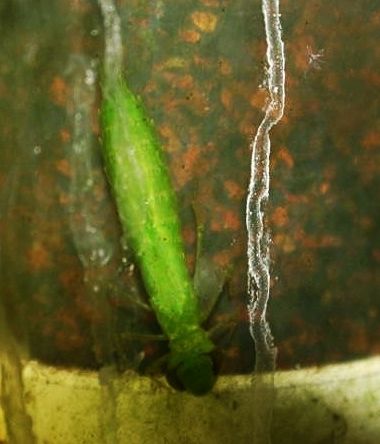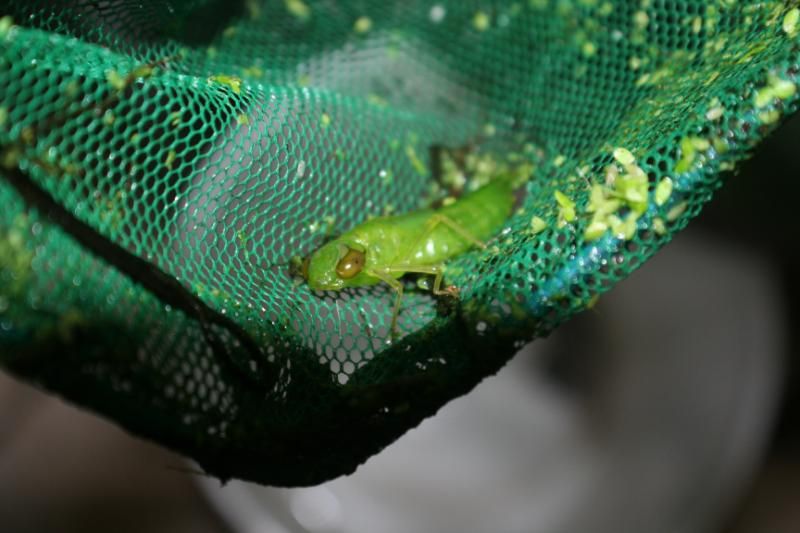What are the chances of introducing unwanted organisms into your aquarium when putting in new plants? Can you just wash with chlorinated water or do you recommend a dip one sort? What about quarantining them, like you would a new fish? How long to quarantine plants?
Do you Quarantine or sterilize plants?
- Thread starter Hipporhyn
- Start date
You are using an out of date browser. It may not display this or other websites correctly.
You should upgrade or use an alternative browser.
You should upgrade or use an alternative browser.
Hello; I have live plants and di not QT them back when I first bought them. I do like snails so that I might pick up some extra was not a problem for me. My guess is snails could be the most likely hitchhiker.
I can see the possibility of parasites or such being on plants but have not experienced this myself.
I have read about a series of dip solutions some have used. First solution has some chlorox type chemical in it. Plants are dipped for a few seconds. Second dip is clean water and third dip is water with something like Prime or SAFE mixed strong enough to deal with any chlorox residue. Sorry I do not recall the concentrations nor the actual dip times. This was on this site a while back so maybe a search.
I can see the possibility of parasites or such being on plants but have not experienced this myself.
I have read about a series of dip solutions some have used. First solution has some chlorox type chemical in it. Plants are dipped for a few seconds. Second dip is clean water and third dip is water with something like Prime or SAFE mixed strong enough to deal with any chlorox residue. Sorry I do not recall the concentrations nor the actual dip times. This was on this site a while back so maybe a search.
The chances of introducing unwanted organisms into your aquarium by adding in new plants is fairly high as snails frequently lay eggs on plants and other micro-organisms do the same/live on the plants.I just rinse them with tap water and lightly scrub them because I am not worried about getting snails, micro-organisms, etc. into my tank as they aren't harmful. You can do a plant dip to get rid of things, but I don't bother with that, you can quarantine them too if you want, as for how long to quarantine plants, I'm not sure about that, but I think a week would be more than enough.What are the chances of introducing unwanted organisms into your aquarium when putting in new plants? Can you just wash with chlorinated water or do you recommend a dip one sort? What about quarantining them, like you would a new fish? How long to quarantine plants?
Hi, it depends where you buy plants from.
If there are any fish within the same water, there is a chance you transmit dieases by putting the new plants into your tank.
Some people are careful and dip there plants in solutions of potassium permanganate or hydrogen peroxide, to kill any potential pathogens.
Others are just watering them for some weeks.
I have read some guys had bad luck with certain catfish and shrimps, when they have bought from aquatic plant trading companies- using certain fertilizer or even pesticides.
There is a simple test- pour some water fleas into the water, where your new plant is located.
They are prone to many poisonus matter, copper too, by the way.
So if they should die rather quick, better not introduce the plants yet.
If there are any fish within the same water, there is a chance you transmit dieases by putting the new plants into your tank.
Some people are careful and dip there plants in solutions of potassium permanganate or hydrogen peroxide, to kill any potential pathogens.
Others are just watering them for some weeks.
I have read some guys had bad luck with certain catfish and shrimps, when they have bought from aquatic plant trading companies- using certain fertilizer or even pesticides.
There is a simple test- pour some water fleas into the water, where your new plant is located.
They are prone to many poisonus matter, copper too, by the way.
So if they should die rather quick, better not introduce the plants yet.
When I purchased plants I always dipped them in a potassium permanganate solution. All it takes is a single drop of water to introduce pathogens/parasites to ones system.
Beyond snails and their eggs there are a host of others, including parasitic leeches, and other insect larvae, not to mention bacteria , viruses, and dormant protozoa like ick. I (similar to RD) also dip in either Potassium permanganate, or an alum solution.
I was given some emergent plants, and lacadazically added them to a sump without a sufficient dip, the, sump tank ended up a grow out for fry, but I soon noticed the fry population diminishing, and found this.


it had grown quite large feeding on 1 inch beanie fry, but evaded detection for quite some time.

I was given some emergent plants, and lacadazically added them to a sump without a sufficient dip, the, sump tank ended up a grow out for fry, but I soon noticed the fry population diminishing, and found this.


it had grown quite large feeding on 1 inch beanie fry, but evaded detection for quite some time.

What is that? Whatever it is, it looks like it would make a nice treat for a large fish!Beyond snails and their eggs there are a host of others, including parasitic leeches, and other insect larvae, not to mention bacteria , viruses, and dormant protozoa like ick. I (similar to RD) also dip in either Potassium permanganate, or an alum solution.
I was given some emergent plants, and lacadazically added them to a sump without a sufficient dip, the, sump tank ended up a grow out for fry, but I soon noticed the fry population diminishing, and found this.
it had grown quite large feeding on 1 inch beanie fry, but evaded detection for quite some time.

Thanks for the responses. Where do you get potassium permanganate? How do you prepare the dip and how long would you dip the plants? Would you dip duckweed in it?



